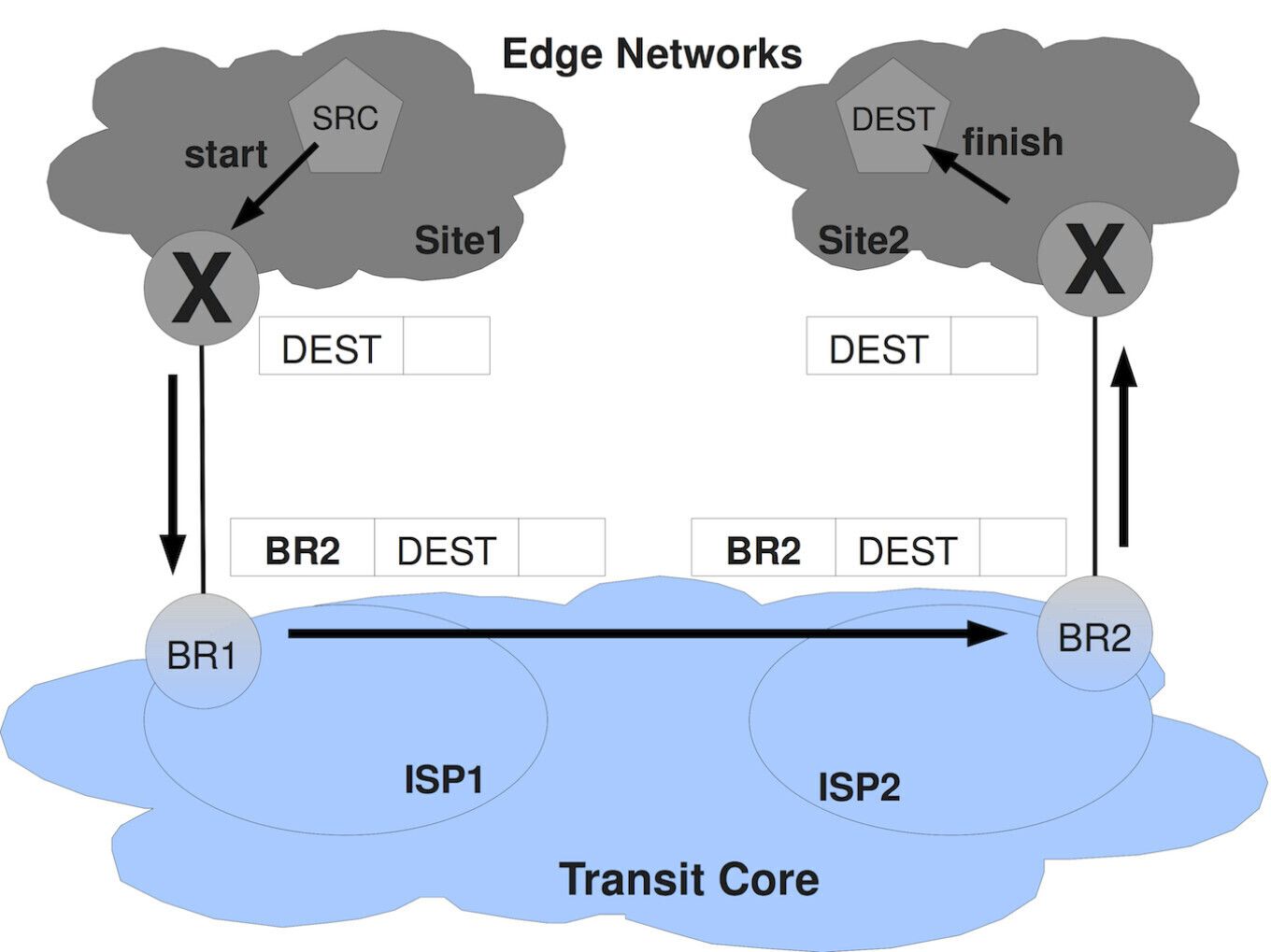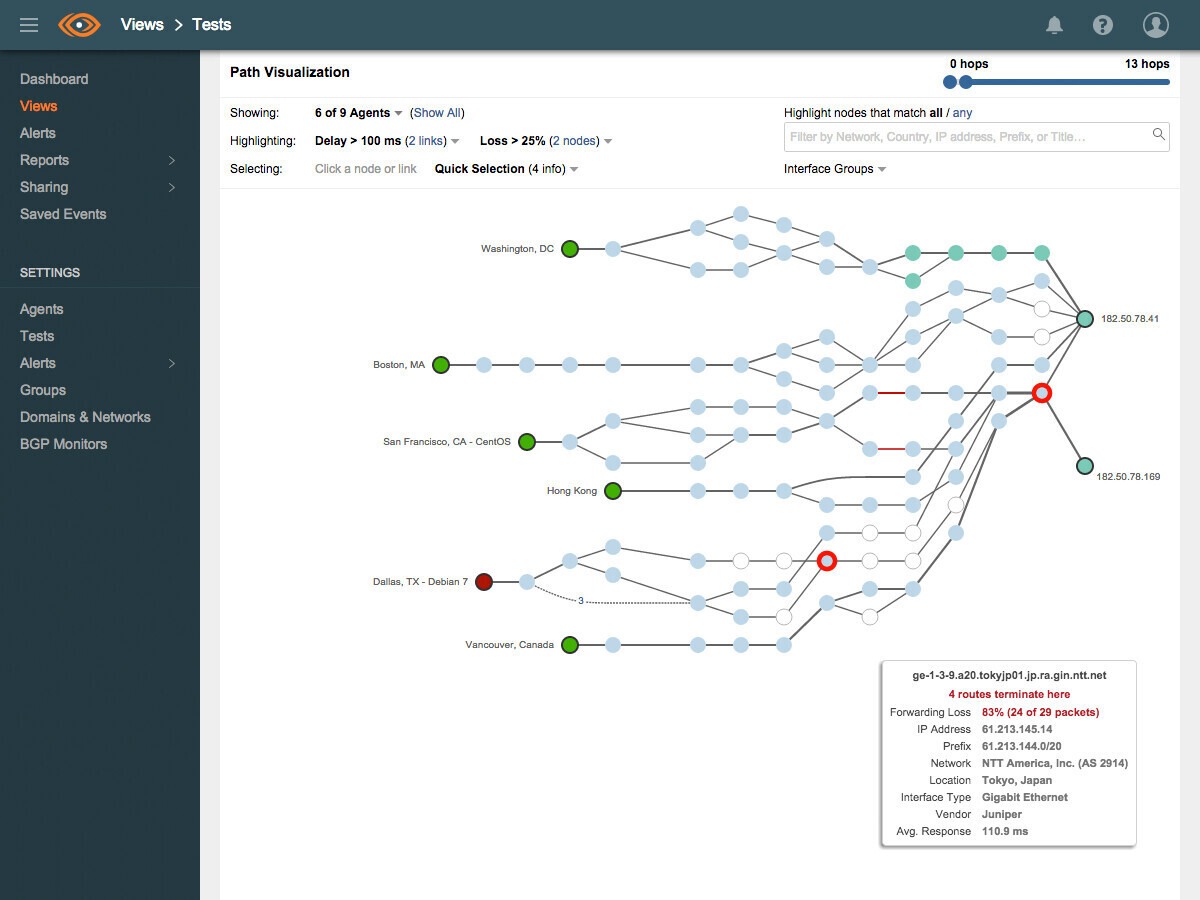My interest in the inner workings of the internet began in the spring of 2007, when my friend Daniel Jen suggested we take Professor Lixia Zhang’s graduate-level course on internet research together. Dan and I collaborated on the course project, an ambitious proposal to tweak the core infrastructure of the internet for better scalability. This proposal became APT: A practical tunneling architecture for routing scalability, a project which would lead us both to spend the rest of our graduate school careers working with Professor Zhang in her Internet Research Lab.

We presented our proposal to the Internet Engineering Task Force’s Routing Research Group at their semiannual meeting in November, 2007, but it never received much traction. This work has been subsumed by Named Data Networking (NDN), which solves a much larger infrastructure problem in a much more clever way, sweeping up scalability issues in its wake.
I subsequently switched my research focus to wireless networks (and how to apply NDN in that context). However, the majority of my labmates were still focused on internet infrastructure, and in particular on measuring the real network. Two of these labmates were Mohit Lad and Ricardo Oliveira, which is how I came to be the first employee at their startup, ThousandEyes (now part of Cisco) in 2010.
ThousandEyes continued in the same vein of network measurement, analysis, and visualization as Mohit and Ricardo’s work at UCLA, but building commercial products. Our first product was a novel system for monitoring the Domain Name System (DNS), a product for which I built the entire measurement and data collection system. This code ran with little modification and minimal maintenance for years (at least from 2010 through 2017), continuously providing data to some of the world’s largest tech companies.
I was also the sole developer of ThousandEyes Path Visualization from its inception through the first few years. Path Visualization is a sort of visual multi-point-to-multi-point traceroute, inferring the topology of the relevant slice of the internet from multiple independent measurements. Path Visualization is still a flagship part of the ThousandEyes product to this day, retaining most of the basic concepts and visual elements of the original version.

As the years went on, I took on a bigger leadership role and did less and less of the coding myself. Instead, I had the privilege of building and working with an incredible team that, thanks in no small part to Ricardo’s unmatched creativity as CTO, continued to develop novel network data collection, troubleshooting, data analysis, and visualization techniques.
Relevant publications:
-
Monitoring enterprise networks with endpoint agents
Martin Dam, Michael Meisel, Nelson Rodrigues, Ricardo V. Oliveira, and Santiago Alessandri. U.S. Patent 10,659,325, issued May 19, 2020. -
Monitoring service availability using distributed BGP routing feeds
Ricardo V. Oliveira, Michael Meisel, and Ryan Braud. U.S. Patent 9,729,414, issued August 8, 2017. -
Deep path analysis of application delivery over a network
Mohit V. Lad, Ricardo V. Oliveira, Michael Meisel, and Ryan Braud. U.S. Patent 9,455,890, issued September 27, 2016. -
Cross-layer troubleshooting of application delivery
Mohit V. Lad, Ricardo V. Oliveira, Michael Meisel, and Ryan Braud. U.S. Patent 9,411,787, issued August 9, 2016. -
APT: A practical tunneling architecture for routing scalability
[DOI]
Dan Jen, Michael Meisel, Daniel Massey, Lan Wang, Beichuan Zhang, and Lixia Zhang. In Solutions for Sustaining Scalability in Internet Growth, IGI Global, 2014. -
Towards a New Internet Routing Architecture:
Arguments for Separating Edges from Transit Core
Dan Jen, Michael Meisel, He Yan, Dan Massey, Lan Wang, Beichuan Zhang, and Lixia Zhang. In Proceedings of HotNets-VII, 2008. -
APT: A Practical Transit Mapping Service
[Slides]
Dan Jen, Michael Meisel, Dan Massey, Lan Wang, Beichuan Zhang, and Lixia Zhang. IETF Internet Draft (draft-jen-apt-01) presented at IETF69, 2007.